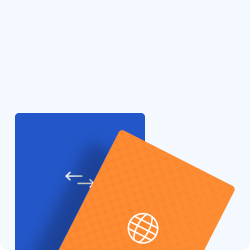Customers sending funds to a foreign country may choose to arrange a money transfer over the phone, online or in person. Regardless of the method used to set up the payment, customers are likely to encounter references to “SEPA” and “SWIFT.” For many people, this terminology will be alien to them, so in this guide we hope to explain the meaning and provide context for both terms.
What is SEPA?
SEPA stands for Single Euro Payments Area; a SEPA transfer is a cross-border payment made between the countries within this area. The SEPA zone is a European Union (EU) initiative that was designed to harmonise Euro transfers.
What is a SWIFT Code?
Sometimes also referred to as a BIC (Business Identifier Code), a SWIFT code is an 8 to 11 digit alphanumeric code created and used by the Society for Worldwide Interbank Financial Telecommunication network, to identify the bank or financial institution sending or receiving an overseas money transfer. Each of the 8 to 11 characters provides crucial details such as the address, branch number and destination country of the associated remittance.
What countries are included in the SEPA zone?
The following countries are participants in the SEPA zone:
Austria | Latvia |
Belgium | Lichtenstein |
Bulgaria | Lithuania |
Croatia | Luxembourg |
Cyprus | Malta |
Czech Republic | Monaco |
Denmark | Netherlands |
Estonia | Norway |
Finland | Poland |
France | Portugal |
Germany | Romania |
Gibraltar | San Marino |
Greece | Slovakia |
Hungary | Slovenia |
Iceland | Spain |
Ireland | Sweden |
Italy | Switzerland |
What countries use SWIFT codes?
As it stands, as of July 2021, a total of 212 countries worldwide participate in the SWIFT network, and approximately 40% of all international money transfers are made using the SWIFT network. Countries such as China, Russia, Iran, Syria, Cuba, Lebanon, North Korea, Sudan and Ukraine do not use the SWIFT network.
How do SEPA payments work?
SEPA payments are designed to be as secure and easy to set up as domestic bank transfers. This is achieved through the cooperation of financial institutions and banks across Europe, who support SEPA payments as part of a bigger network of intermediary and receiving affiliate banks. This network of SEPA affiliates are able to process Euro transfers seamlessly and without any complications.
The European Payments Council (EPC), responsible for the development of SEPA, has established two different payment schemes to suit the needs of sending and receiving parties: the SEPA Direct Debit and SEPA Credit Transfer.
How do SWIFT payments work?
Instructions of payments sent via the SWIFT network are communicated between the banks or financial institutions that initiated the transfer, in a secure, encrypted way. Although funds are not transported via the SWIFT network, the instructions communicate exactly what needs to happen for the money to be deposited in the correct account.
Do you need a SWIFT code to make a SEPA payment?
No, as of 2016 senders no longer need to provide the SWIFT code/BIC of their beneficiary when making a SEPA payment.
Summary
It is important for anyone arranging an international money transfer to understand and identify the differences between a SWIFT and SEPA payment:
The SWIFT network facilitates payments between international countries around the world
SEPA transfers can only be sent and received within the SEPA zone
SWIFT transfers can be sent from more than 200 countries, using a variety of foreign currencies
SEPA payments only encompass Euro transfers
Although there are a number of differences between SEPA and SWIFT transfers, the SWIFT network and SEPA zone were both designed to simplify and streamline global transfers across borders. Whether you’re an individual or a business arranging remittances with SWIFT or SEPA, rest assured that a seamless transfer is guaranteed.







.svg)






